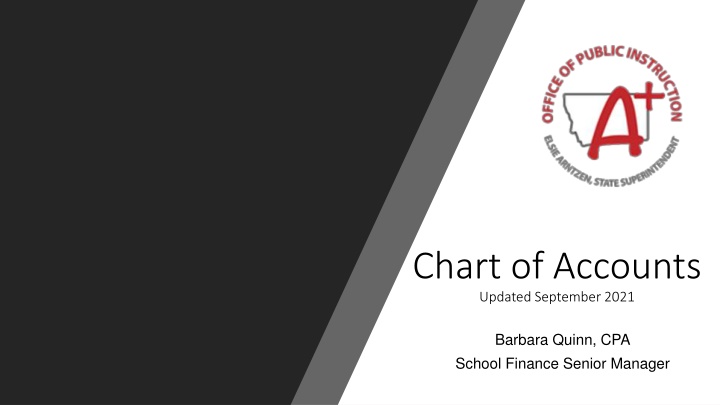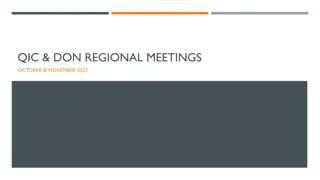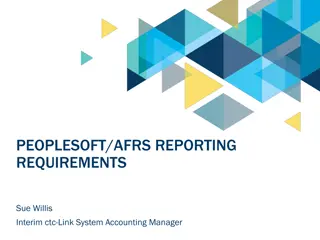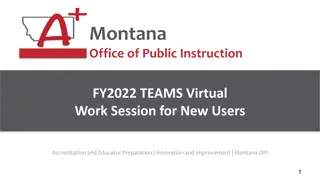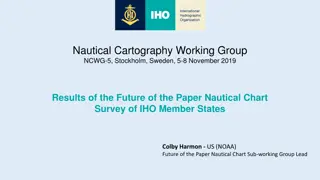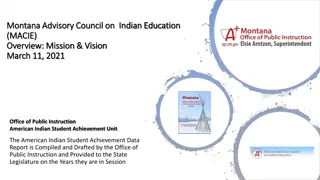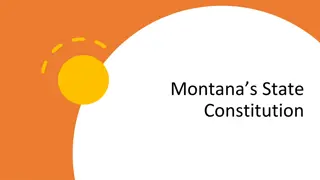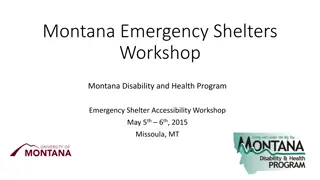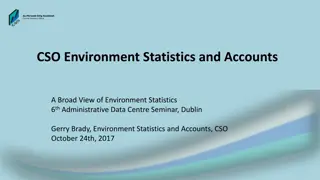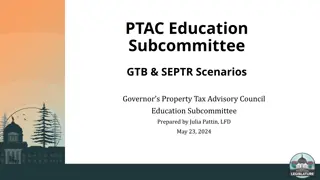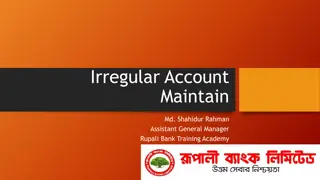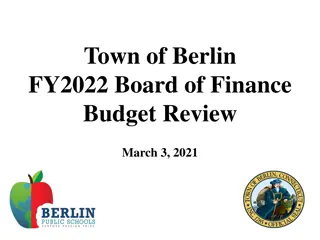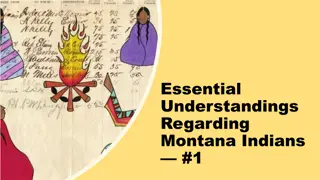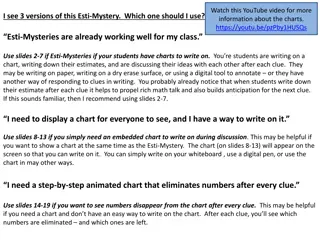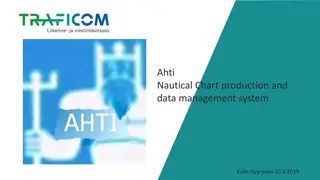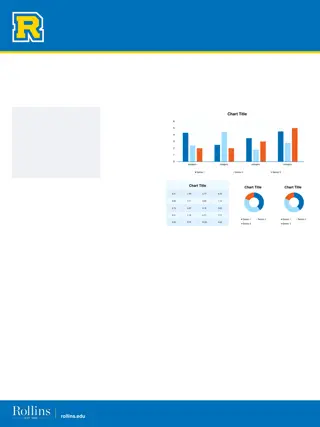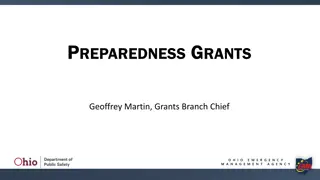Montana State Chart of Accounts: Updated FY2022 Overview
The Montana state chart of accounts underwent a major revision in FY2021, aligning closely with the Federal Chart of Accounts. This comprehensive guide covers the latest updates, fund classifications, and structures, offering insights into governmental, proprietary, and fiduciary funds for effective financial management in the public sector.
Download Presentation

Please find below an Image/Link to download the presentation.
The content on the website is provided AS IS for your information and personal use only. It may not be sold, licensed, or shared on other websites without obtaining consent from the author.If you encounter any issues during the download, it is possible that the publisher has removed the file from their server.
You are allowed to download the files provided on this website for personal or commercial use, subject to the condition that they are used lawfully. All files are the property of their respective owners.
The content on the website is provided AS IS for your information and personal use only. It may not be sold, licensed, or shared on other websites without obtaining consent from the author.
E N D
Presentation Transcript
Chart of Accounts Updated September 2021 Barbara Quinn, CPA School Finance Senior Manager
History on the Update The older Montana state chart of accounts was dated 2012. November 2014 began a major update of the chart of accounts. With the final version being published in July 2020 (FY2021). The latest update to the Chart of Accounts is September 2021 (FY2022). The introductory page describes the most recent changes and notable updates.
Revisions to the Chart of Accounts The FY2021 revision included updates based on the most recent version of the Federal Chart of Accounts. Montana OPI models its chart of accounts as closely as possible to the Federal Chart of Accounts. Since November 2020 the largest change: Revenue codes (7000 s) and program codes (700 s) for CRRSA Coronavirus Response and Relief Supplemental Appropriations, referred to as ESSER II and ARP American Rescue Plan Act, referred to as ESSER III.
3.1 Types of Funds Governmental Funds Used to account for most governmental functions Proprietary Funds Used to account for a government s ongoing activities such as those often found in the private sector Fiduciary Funds Used to account for assets held by a government in a trustee capacity or as an agent for individuals, private organizations, or other governmental units
3.5A Fund Structures Governmental Governmental Funds: Fund Numbers 01 10-29, 84 45-49 50-59 60-69 General Fund Special Revenue Funds Permanent Funds Debt Service Funds Capital Projects Funds Extracurricular Fund (84) is considered a special revenue fund per GASB 84
3.5B Fund Structures Proprietary Proprietary Funds: Enterprise Funds Internal Service Funds 70-72 73-79
3.5C Fund Structure Fiduciary Fiduciary Funds: Trust Funds Custodial Funds 81-83 & 85 86-95
3.6 Fund Definitions General Fund. This fund is the chief operating fund of the school district. It is used to account for all financial resources of the school district except for those required to be accounted for in another fund. A district may have only one general fund. 3.7 Account Structure
3.8 Balance Sheet Account Structure Balance sheet accounts are based upon five principal groups, which are: (1) 100 - 399 Assets and Other Debits (2) 400 - 499 Budgeting/Nominal Accounts-Revenue Control (3) 600 - 699 Liabilities, Deferred Inflow, and Other Credits (4) 800 - 899 Budgeting/Nominal Accounts-Expenditure Control (5) 900 - 999 Equity
3.9 Revenue/Other Financing Account Structure (1) 1000 Revenue from Local Sources (2) 2000 Revenue from County Sources (3) 3000 Revenue from State Sources (4) 4000 Revenue from Federal Sources (5) 5000 Other Financing Sources (6) 6000 Adjustments to Beginning Fund Balance (7) 7000 Emergency Federal Sources
Balance Sheet Accounts: Assets, Liabilities, and Fund Equity Accounts: X X X X X X X X X District/Fund Balance Sheet Account Project Reporter Code-Optional (Not used in MAEFAIRS) Statement of Operational Accounts (Revenues and Expenditures): Revenue Accounts: X X X X X X X X X X District/Fund Subsidiary Source Project Reporter Code-Optional Expenditure Accounts: X X X X X X X X X X X X X X X X X X X X X X X District/Fund Subfund School Code Program Function Object PRC Fund 61 Building Reserve For Most Funds
Revenue Updates A review of all revenues used in MAEFAIRS was completed in FY2021 and some revenue codes were discontinued/expired. Revised and opened revenue codes include this partial list: 3720 Delivering Local Assistance Grant (Dept of Commerce) 3760 Transformational Learning Grant 3770 Advanced Opportunities Grant 3283 State Major Maintenance Aid 3250 Mt Digital Academy (Deposited to Fund 15 NOT 82, GASB) 7600 CARES Federal Stabilization Aid 7650 CARES State School Emergency Relief Fund 7700 CARES Governor s Emergency Education Relief Fund
Program Code Updates Updates for program codes are similar to what we saw for revenues: Certain unused programs were closed Names were modified to the federal ESSA names Names were changed to match the corresponding revenue names Some programs were opened/closed in incorrect/changed funds Language was updated in the chart of accounts, most of it to comply with the federal chart of accounts.
Function Updates Changes were minimal: Function descriptions were changed to better align with the language used in the most recent federal guidance.
Object Updates Minimal changes Object descriptions were changed to better align with the language used in the most recent federal guidance.
3.14 Project Reporter Codes (PRC) Project reporter codes allow a district to identify levels of expenditures and revenues to meet reporting requirements for local, state, and federal levels. A unique project reporter code should be assigned to link the revenue and expenditure accounts for each state and federal grant or project. The PRC is required in the Miscellaneous Fund (15).
Project Reporter Codes in MAEFAIRS PROJECT REPORTER CODE (PRC): Enter a unique, three-digit PRC (e.g.,123). Reserved for OPI use 000 or 900-999. Title: Select a project name from the dropdown list OR enter the grant or project name (e.g., IDEA-B). Selecting from the dropdown list will pre-fill the Title, CFDA Number and Type, if applicable. Type: Select Federal, State or Local from the dropdown list. Project Number: Enter the complete grant or project number, as assigned by the OPI or the grantor.
Reasons to use a PRC Designed for state and federal grants for tracking Permits the user to tie expenditures and revenues A tool to be used in your accounting system and in MAEFAIRS Use the PRC filters to find errors and reconcile
Requested of You If you find that we expired or don t have one of your PRC names, revenues, or program codes, PLEASE contact us with your requested changes.
Plans for the Future: Annual updates with a summary of changes in the introduction. Chart of accounts are in effect immediately. As this is a living document, feel free to contact the OPI regarding this publication and the topics discussed. OPISchoolFinance@mt.gov
Questions? Comments Barbara.Quinn@mt.gov 406.444.3249
